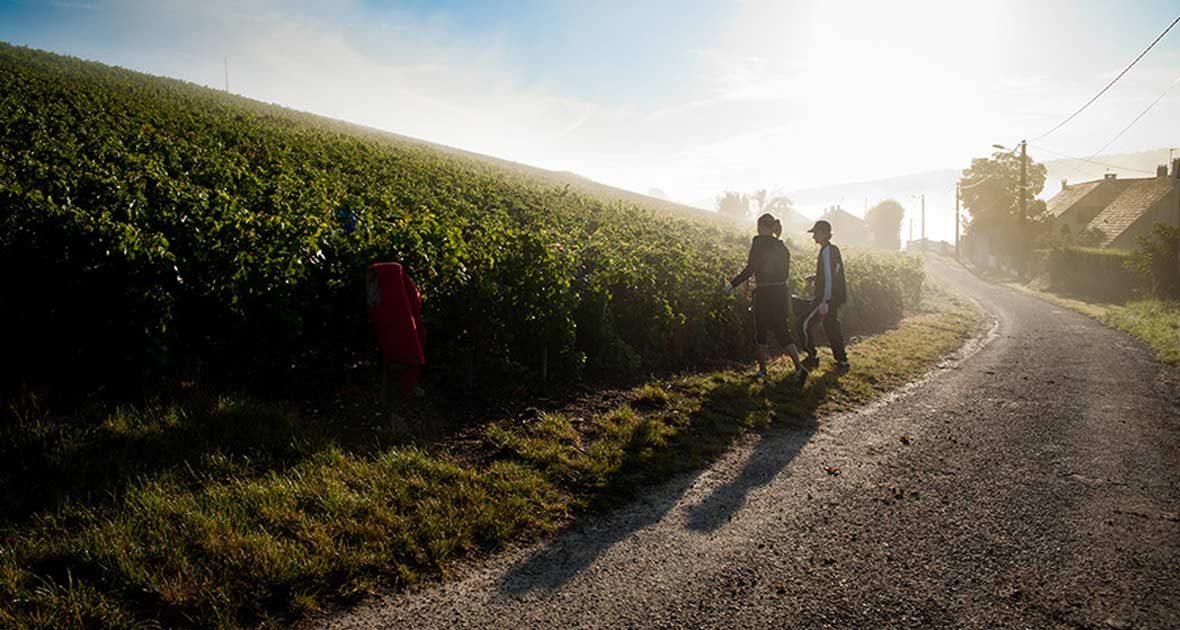There aren’t many producers in Champagne who can boast a 361 year history. Gosset and Philipponnat date back to the 16th century, and Gratiot-Pillière, founded in 1657, joins the ranks with these prestigious houses as one of the oldest Champagne houses still in existence. But if this is the first you’re hearing of Gratiot-Pillière, don’t feel bad: this tiny, historic house is one of the best-kept secrets in Champagne today.
Why haven’t we heard of this family before? The answer is simply that they only just began making sparkling wine in 1963. From their 17th century beginning until the mid-20th century, this Marne Valley producer was heralded not for their sparkling Champagne, but their still white wines.
When 10th generation winemaker Jean-Claude Gratiot married Francoise Pillière and launched Gratiot-Pillière in the late 1960s, he decided to take his family’s legacy as still wine makers and bring it in a different direction. And while it may seem beyond obvious to make Champagne when your family has lived in Champagne for almost 4 centuries, it bears saying that the world’s favorite luxury sparkling wine had nowhere near the reputation and popularity in the 1960s that it enjoys today.
Jean-Claude began his Champagne campaign in the most humble way: by loading up his pick-up truck with cases of wine and selling bottles roadside to passers-by and small wine shops just outside of Paris. And as the most successful businesses know, the best form of advertisement is word of mouth—which is exactly what Jean-Claude was going for. Word spread of the quality and value of Champagne Gratiot-Pillière, and soon Jean-Claude and his wife were able to purchase more vineyards to increase their production to the extent that we’re able to offer it to you today in Minneapolis, 4000 miles away from Jean-Claude’s little village of Charly-sur-Marne.
The Gratiots do all their vineyard tilling with a plow, hand-pick all their grapes, and share resources and equipment with a few other growers in the Marne Valley in a cooperative winery. This makes them a récoltant-cooperative—a grower cooperative. Their Brut Tradition represents the largest portion of production, and is a blend of 64% Pinot Meunier (the specialty grape of the Marne Valley), 33% Chardonnay and 3% Pinot Noir. The large proportion of Pinot Meunier gives the wine a beautifully deep, rich and fruit-driven aroma and taste, and an equally beautiful golden blond color in the glass. Tangy, refreshing and ripe with a mineral-driven finish, it drinks far beyond its humble $40 price tag.
And while the Brut Tradition—like most sparkling wines—is a perfect libation to sip during a toast or before a meal as an aperitif, it should not be overlooked as a flexible food-pairing option. From fried foods to appetizers to Asian cuisine and beyond (especially this decadent scallops dish with orange-butter sauce, this one-size-fits all Champagne is as friendly to a plethora of dishes as it is to your wallet.
This is already a staff favorite bubbly, which means that it’ll be the go-to for our holiday celebrations this year. And while that’s a great endorsement for you to try it, you’d best run—not walk—because although we have decent stock of it for you at the moment, don’t expect this one to last long. (We may drink it all ourselves before you get here.)
